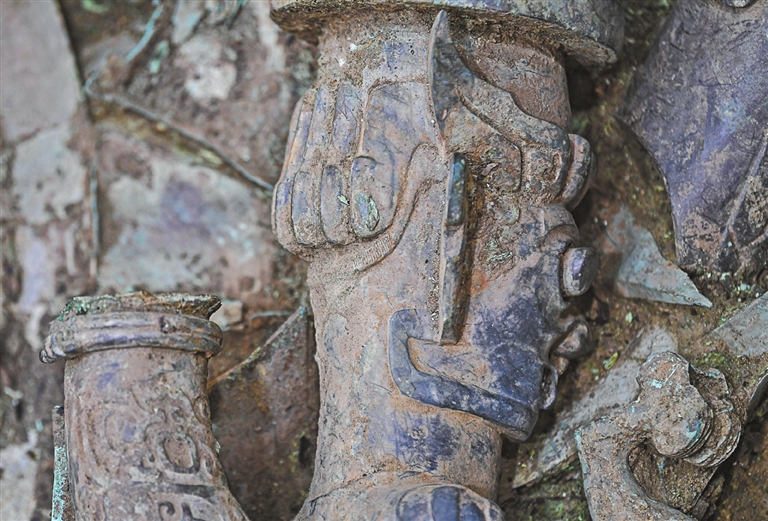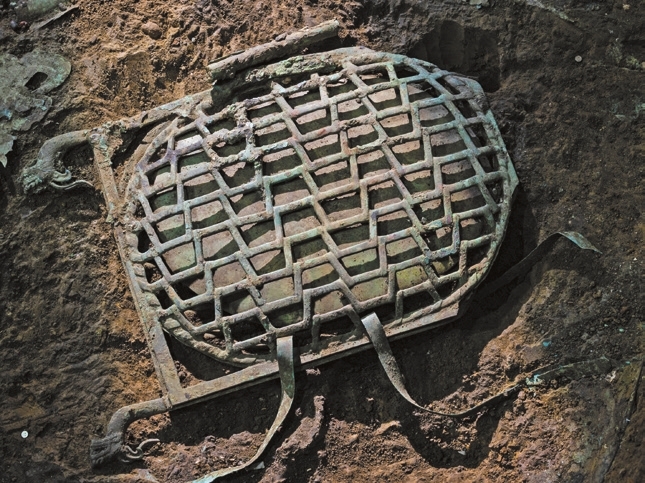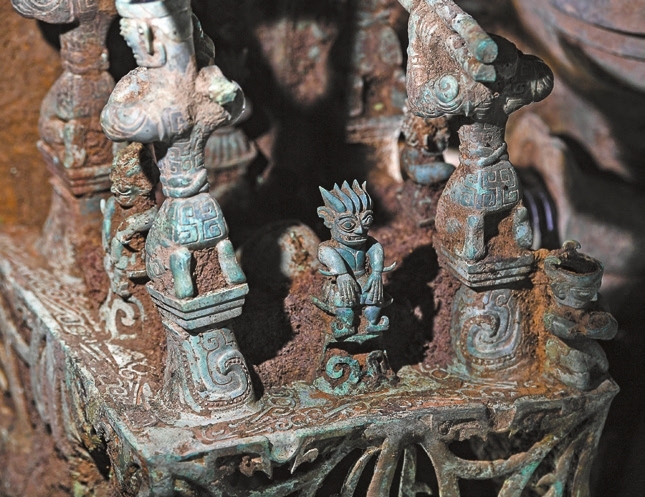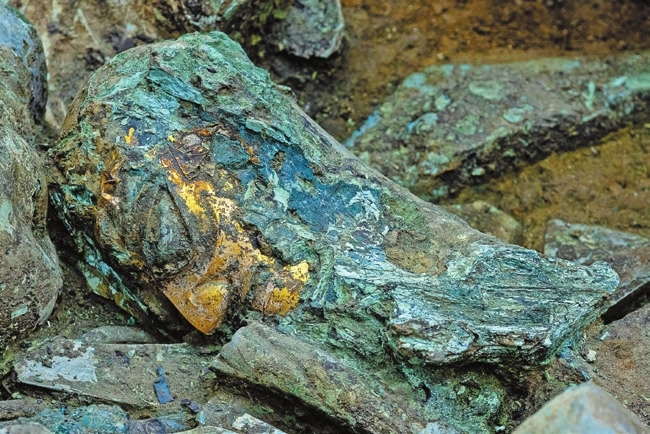



CHINESE archaeologists have recently made some stunning discoveries at the famed Sanxingdui Ruins in Sichuan Province, according to a press conference at the Sanxingdui Museum yesterday. Ran Honglin, from the Sichuan Provincial Cultural Relics and Archaeology Research Institute, said that 3,155 cultural relics in complete structure, including 1,238 pieces of bronzeware, 543 gold artifacts and 565 jade artifacts, have been recovered from the six new pits, offering many new clues to decode the ancient Shu Kingdom civilization. Ran said new carbon-dating results on about 200 relics in the pits ranged from 1131 B.C. to 1012 B.C., meaning most of the pits were from the late Shang Dynasty (1600-1046 B.C.). “The question of its age, which had been bothering us over the past 30 years, has been solved,” Ran said. The 13,000-sqm sacrificial area in Guanghan City, around 60 kilometers from Chengdu, includes pits No. 1 and 2 excavated in 1986 and the six pits newly discovered between 2020 and 2022. Now, field excavations of pits No. 3 and 4 have been completed, and pits No. 5 and 6 are undergoing laboratory archaeological cleaning. The new finds are mainly excavated from the No. 7 and No. 8 pits, bringing the total number of items discovered in the six pits at Sanxingdui to nearly 13,000, according to the Sichuan Provincial Cultural Relics and Archaeology Research Institute. The excavations were carried out by the institute, Peking University, Sichuan University and other research institutions and universities. A bronze box with a green jade ware inside, which was discovered in the No. 7 pit, is a highlight among the newly found artifacts. The top and bottom of the vessel are covered with tortoise-shaped reticulate lids, and the sides of the box are adorned with a bronze hinge, handles shaped as dragon heads and a few bronze streamers. Microtrace analysis revealed that the box was wrapped in silk. “It would not be an exaggeration to say that the vessel is one of its kind, given its distinctive shape, fine craftsmanship and ingenious design. Although we do not know what this vessel was used for, we can assume that ancient people treasured it,” said Li Haichao, a professor at Sichuan University who is in charge of the excavation at the No. 7 pit. Jade wares and bronze decorations, figurines and bells were also found in the pit. “We had never seen something like these, and we even don’t know how to describe their patterns or shapes in short words,” Ran said. “It’s also confusing for us to speculate how they were used before further studies. But these artifacts feature a mixture of typical local styles of cultural relics as well as those from the Central China Plains at that time,” he explained. “It demonstrates through close communications, the ancient Shu culture became a key part in early Chinese civilization.” In the adjacent No. 8 pit, archaeologists unearthed a variety of artifacts including bronze heads with gold masks, a bronze sculpture with a human head and snake body, a bronze altar, a giant mythical creature made of bronze and a dragon-shaped bronze item with a pig nose. “The sculptures are very complex and imaginative, reflecting the fairy world imagined by people at that time, and they demonstrate the diversity and richness of Chinese civilization,” said Zhao Hao, an associate professor at Peking University who is head of the excavation of the No. 8 pit. Around the pits, archaeologists also found ash ditches, architectural foundations and small sacrificial pits, and cultural relics, as well as bamboo, reeds, soybeans, and cattle and boars that may have been sacrificed. Even with the volume of discoveries, Sanxingdui still has more surprises to offer. For example, no physical evidence of silk from 3,000 to 4,000 years ago was previously found in Southeast China. But about 20 artifacts in the ongoing excavation in Sanxingdui were found to once be covered by silk. Research into plant and animal remains among burned ashes in pits could also help people better know the natural environment of Sanxingdui’s time. Originally discovered in the late 1920s, the Sanxingdui Ruins have been dubbed as one of the world’s greatest archaeological findings of the 20th century. The ruins are believed to be the remnants of the Shu Kingdom. (Xinhua, China Daily) | 
